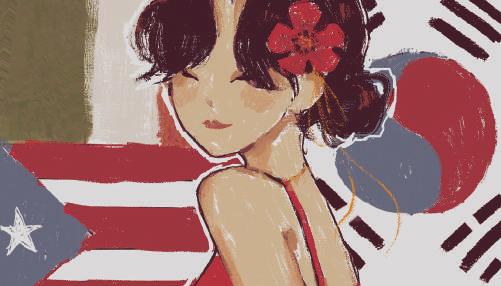
2 minute read
D a y s o f d e f i a n c e
from nuAZN | #29. COMING OF AGE
by nuAZN
Asian students share stories of resistance.
Story by Esther Lim Design by Ellie Siu
Advertisement
Secret tattoos, donuts in empty parking lots, broken curfews, slammed doors and sarcastic eye rolls — these common tropes of rebellion have been retold time and time again, cementing assumptions about what a typical coming-of-age story should look like. However, Asian American narratives of resistance and rebellion have long gone unheard and unseen, treated as rare instances of “acting out” or as case studies of defiance against the model minority stereotype.
But it’s in this community’s nature to rebel, often in atypical ways. Much of Asian American rebellion manifests as challenging, questioning, reimagining and growing a deeper understanding of familial relationships and personal identity.
Two Asian American students shared their own experiences of resistance and rebellion.
Erin Palmero
When Medill second-year Erin Palmero’s parents left her home alone for Labor Day weekend her senior year of high school, a sleepover at her place grew into a party. When one guest lost track of his alcohol intake, things got out of hand.
“I was hysterical. I was panicked. I felt horrible,” she says.
The house was a mess. There was puke in the bathtub. Palmero’s parents had to return home in the middle of the night.
But they let it go without wringing Palmero out, to Palmero’s surprise. For her, the incident was a scary but necessary lesson in taking responsibility for building a mature relationship with her parents, rather than a lasting memory of rebellion.
“The consequences of our stupidity are put on our parents,” Palmero says. “They always gave me a space to express my feelings, which I’m very appreciative about, and I know not a lot of households like mine could agree to that.”
Anna Castagnaro
Growing up, Bienen and Communication third-year Anna Castagnaro often struggled to allow her different ethnic identities — Korean from her mom’s side and Italian and Puerto Rican from her dad’s side — to coexist.
“Sometimes I feel like I’m not Latina enough, like I’m not Italian enough,” she says. “The reason why I was denying that [identity] was because of how big and prevalent my Asianness is in my life, which I’m so proud of, but I also want to be proud of my Latinaness.”
Castagnaro has been a member of Refresh Dance Crew, a predominantly Asian dance group, since freshman year, where she’s found comfort and community through familiar styles and faces.
Last quarter, however, she also joined the Latin dance company Dale Duro to reconnect with her roots and challenge the ways she had previously defined her identity.
“I was like, ‘Maybe I should dance a different style, learn something that’s from another part of me that I haven’t danced before,’” she says. “That’s been a kind of rebellion, being one of the only Asian-facing people in the [Dale Duro] dance studio.”









